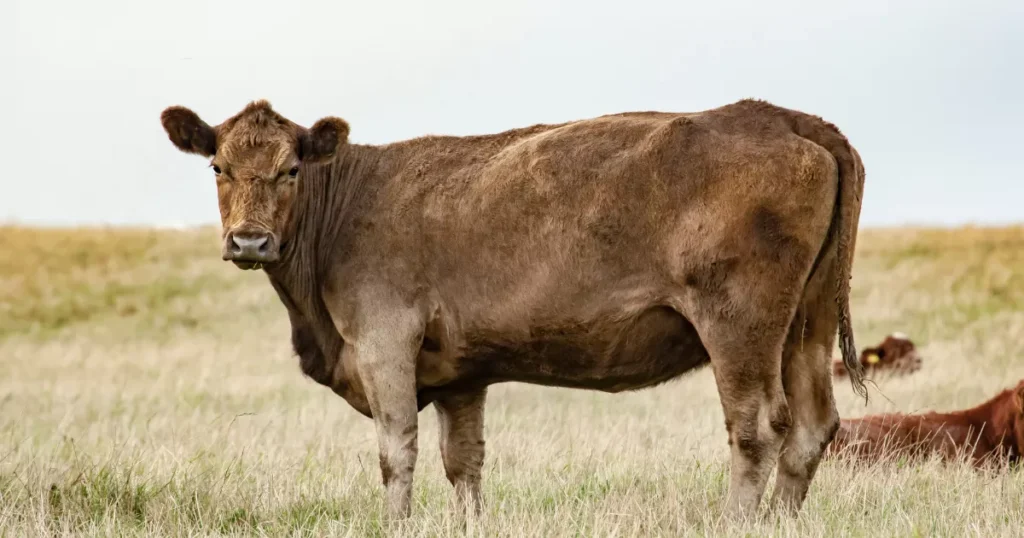The world of cattle breeds is a vast and intriguing one. With each breed comes unique characteristics, histories, and purposes. If you’re intrigued by those that tip the scales at around 3,000 lbs (1,361 kg), then this article is for you. Let’s delve into these heavyweights!
1. Charolais

Originating from France, Charolais cattle have a striking white or cream appearance. They’re widely revered for their beef qualities, with a special focus on meat yield and quality. Charolais cattle can often reach weights of about 2,500 lbs (1,134 kg) for mature bulls.
These cattle aren’t just heavyweights; they also have a gentle disposition. They have a robust history of being exported worldwide, with American ranchers being especially fond of their weighty contributions to the beef industry.
2. Chianina

Hailing from Italy, the Chianina is one of the oldest cattle breeds globally. With a majestic stance and a sleek white coat, these cattle have a history that dates back over 2,200 years! Mature bulls can often weigh in at around 2,800 lbs (1,270 kg).
The world record for the heaviest bull was a Chianina named Donetto, weighing an impressive 3,840 lbs (1,742 kg). Just imagine the sheer size!
3. Maine-Anjou
Originating from the Anjou region of France, Maine-Anjou cattle are deep-red with white markings. They’re known for their docility and rapid growth rates. It’s common to find mature Maine-Anjou bulls weighing around 2,400 lbs (1,089 kg).
This breed was initially a dual-purpose breed, serving both milk and meat production purposes. Today, however, they’re primarily recognized for beef.
4. Limousin

Another French gem, the Limousin breed, has a history dating back to Roman times. These cattle are muscular and are often light golden-red. Mature Limousin bulls frequently reach weights of 2,500 lbs (1,134 kg).
Despite their brawny appearance, Limousins are known for their easy calving, which makes them a favorite among ranchers and farmers.
5. Simmental

This Swiss breed, with its diverse coat patterns ranging from gold to dark red and white, is a true European classic. Simmentals are often used for milk, meat, and as draft animals. Mature Simmental bulls can weigh around 2,700 lbs (1,225 kg).
Due to their versatile characteristics, Simmentals rank among the most widely spread cattle breeds globally.
6. Gelbvieh

German in origin, the Gelbvieh breed has a golden-red hue. They are known for their outstanding maternal qualities and adaptability to various climates. Mature Gelbvieh bulls tip the scales at about 2,600 lbs (1,179 kg).
Their name translates to “yellow cattle,” a nod to their distinctive coat color.
7. Hereford

This British breed is easily recognizable by its white face and red-brown body. While Herefords are medium in size, mature bulls can weigh between 2,200 lbs (998 kg) and 2,500 lbs (1,134 kg).
Herefords have a docile temperament, making them a preferred breed for many cattle enthusiasts, even in the hustle and bustle of a rodeo!
8. Blonde d’Aquitaine

Originating from the Aquitaine region in southwest France, these cattle have a pale gold coat. Known for their muscle development and lean meat, mature bulls can weigh around 2,900 lbs (1,315 kg).
Their leanness doesn’t compromise meat tenderness, striking the perfect balance for beef aficionados.
9. Parthenais

The Parthenais breed, with its silver-grey coat, comes from the Parthenay region of France. They’re celebrated for their beef quality and have a resilient nature. Mature bulls commonly weigh in at about 2,600 lbs (1,179 kg).
They have a rather distinct feature—a crescent-shaped white marking on their forehead!
10. South Devon

Hailing from England, South Devons have a smooth, reddish-brown coat. They’re renowned for their longevity and high-quality meat. Mature South Devon bulls can easily weigh around 2,700 lbs (1,225 kg).
Despite their size, South Devons have a remarkably calm demeanor, making them easy to handle.
So, you might be wondering, why does the weight of these cattle breeds matter? In the world of livestock farming, the weight of a cattle breed often translates to its meat yield, and for beef producers, that directly relates to profitability. But beyond the world of beef production, the majestic size of these breeds is a testament to the rich biodiversity and history of cattle breeding. It’s an intriguing blend of nature and human influence.
Now, the question for you: which of these heavyweight champions intrigues you the most? Whether you’re in the industry, a beef enthusiast, or someone simply captivated by the wonders of the animal kingdom, there’s undoubtedly a story behind each breed waiting to pique your curiosity.